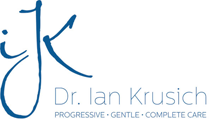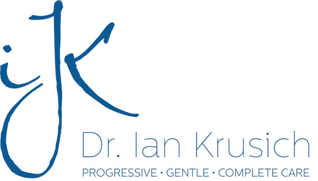What are Dental Bridges?
A dental bridge is a restoration used to fill the gap of a missing tooth or teeth. A bridge consists of two anchors, one on each side, and one or more false teeth in the middle. The middle tooth and/or teeth are called pontics. These can be made of metal or porcelain so they look like natural teeth.
Dr. Krusich will use porcelain or metal after consulting with you to find what material best fits your needs. Porcelain is more esthetic but metal could result in less tooth removal during prep. Dr. Krusich will have a discussion with you to find what’s important to you and help discover what material will be appropriate for your restoration.
Bridges restore one’s confidence and one’s smile by eliminating unsightly gaps in your smile. In addition, patients find they speak more clearly and chew more naturally once the bridge is in place. And with the proper care, bridges can last for 10-years or more.
Advantages & Disadvantages of Dental Bridges
Advantages of Bridges
- Restore ones smile by removing unsightly gaps.
- Can last for 10-years or more.
- Yields better chewing capabilities & balances the bite.
Disadvantages of Bridges
- Not as permanent as implants
- Often require more enamel removal to anchor teeth then implant or removable options to close space.
What to Expect With Dental Bridges
- Dr. Krusich prepares the 2 anchor teeth; usually this involves the prep work for a crown.
- Dr. Krusich will make a mold of your mouth and send it to a lab so they can make the bridge. This usually takes a couple of weeks.
- Dr. Krusich applies a temporary bridge so chewing and any discomfort is minimized until the second appointment.
- At a second appointment, Dr. Krusich places and secures the bridge to the two anchor teeth.
Insurance and Bridges
Bridges vary in cost depending upon each unique circumstance and the type of bridge requested. A portion of the cost is usually covered by insurance but each company, and plans within the same company, are different. It is best to talk with our insurance coordinator, and have her check with your dental insurance provider to see what they will cover.
For any costs not covered by dental insurance, we can work with you to handle the difference. Often the difference is paid for out-of-pocket and for more extensive cases, Care Credit, is used to finance the balance.
Next Steps
Discuss with Dr. Krusich your alternatives to replacing a missing tooth or teeth. Call 913-383-2600 to schedule your appointment today.



